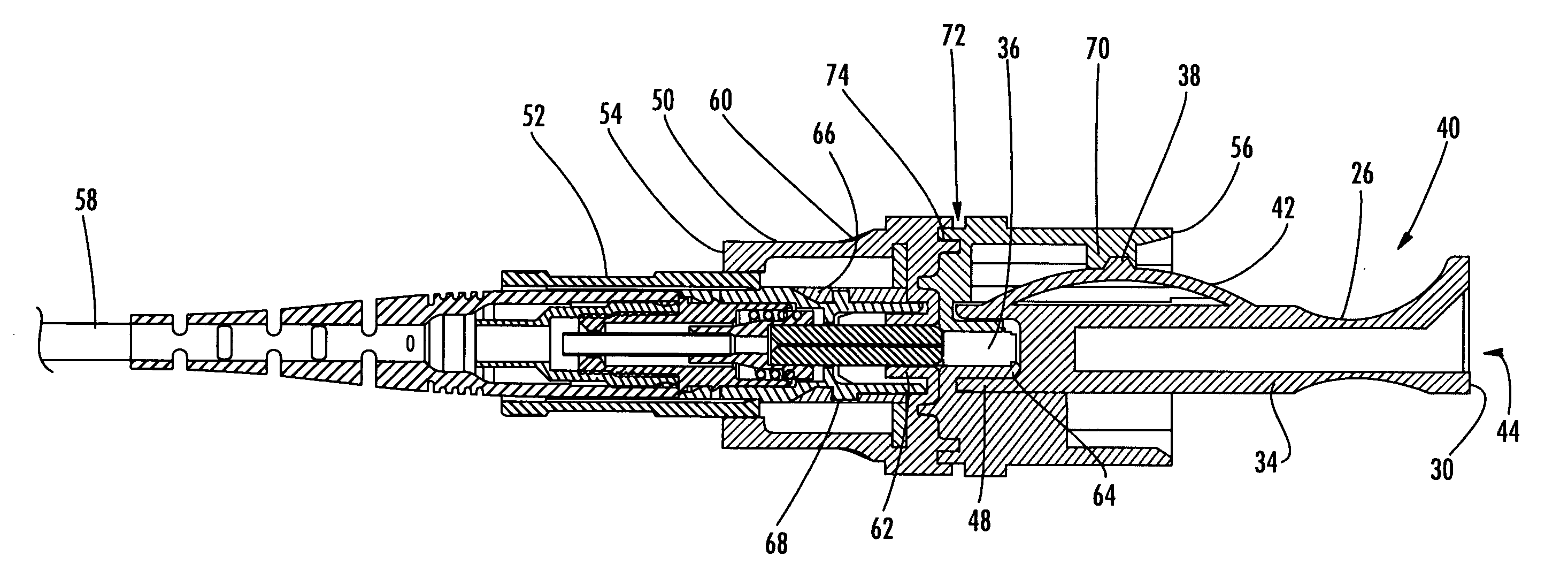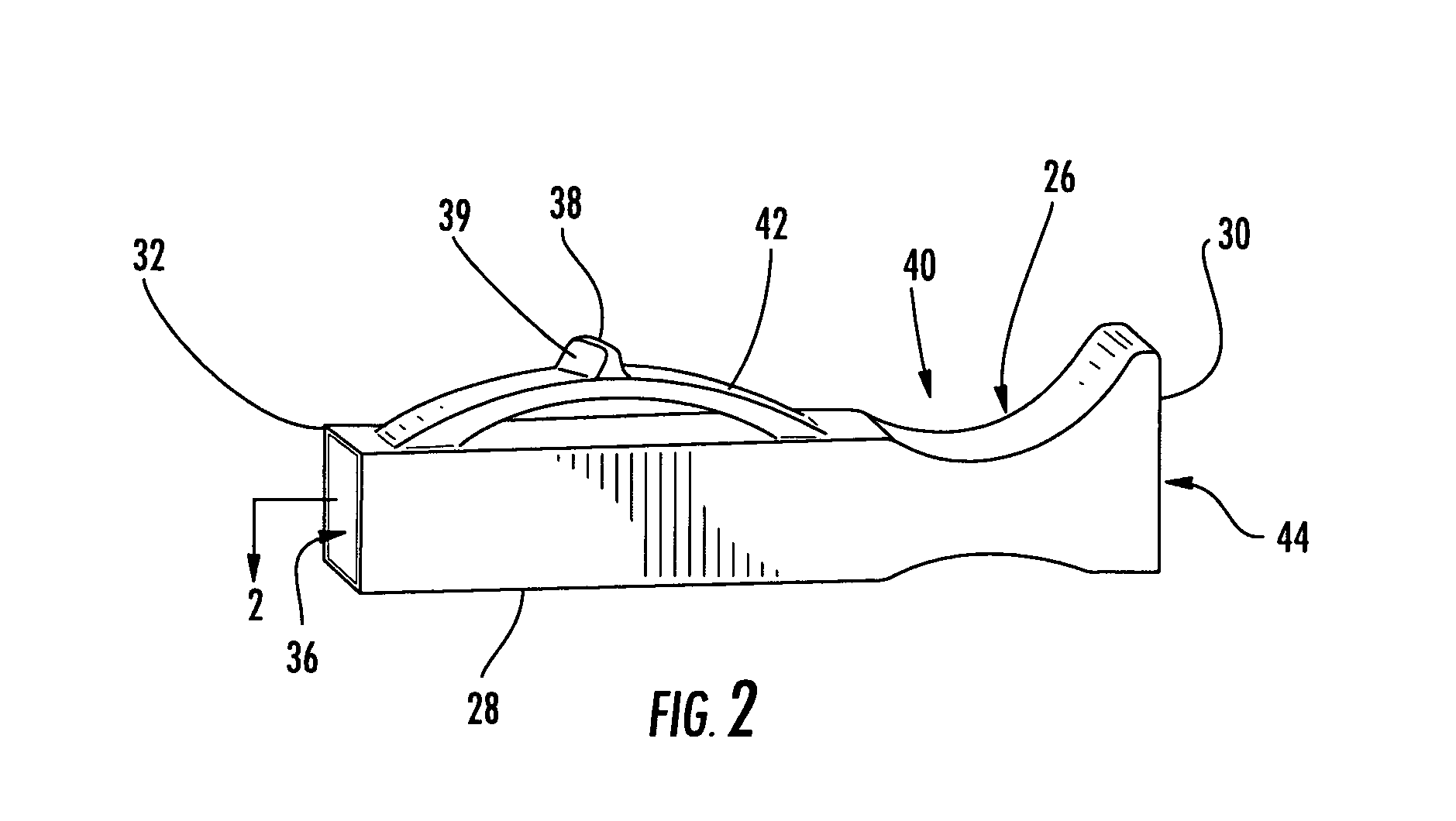Dust cap for fiber optic adapter
a fiber optic adapter and dust cap technology, applied in the field of dust caps, can solve the problems of eye damage, damage or degrade a signal, failure to provide proper long-term engagement, etc., and achieve the effect of preventing dust contamination
- Summary
- Abstract
- Description
- Claims
- Application Information
AI Technical Summary
Benefits of technology
Problems solved by technology
Method used
Image
Examples
Embodiment Construction
[0020]The present invention will now be described more fully hereinafter with reference to the accompanying drawings in which exemplary embodiments of the invention are shown. However, this invention may be embodied in many different forms and should not be construed as limited to the embodiments set forth herein. These exemplary embodiments are provided so that this disclosure will be both thorough and complete, and will fully convey the scope of the invention to those skilled in the art. Like reference numbers refer to like elements throughout the various drawings. Specific embodiments of translucent adapter dust caps operable for securely engaging the inner structural geometry of a fiber optic connector adapter and for producing a visual signal notification of visible or invisible light emanating from a connector inserted into the adapter are shown throughout the figures. It should be understood, however, that alternative adapter dust cap designs may vary in order to accommodate ...
PUM
 Login to View More
Login to View More Abstract
Description
Claims
Application Information
 Login to View More
Login to View More - R&D
- Intellectual Property
- Life Sciences
- Materials
- Tech Scout
- Unparalleled Data Quality
- Higher Quality Content
- 60% Fewer Hallucinations
Browse by: Latest US Patents, China's latest patents, Technical Efficacy Thesaurus, Application Domain, Technology Topic, Popular Technical Reports.
© 2025 PatSnap. All rights reserved.Legal|Privacy policy|Modern Slavery Act Transparency Statement|Sitemap|About US| Contact US: help@patsnap.com



